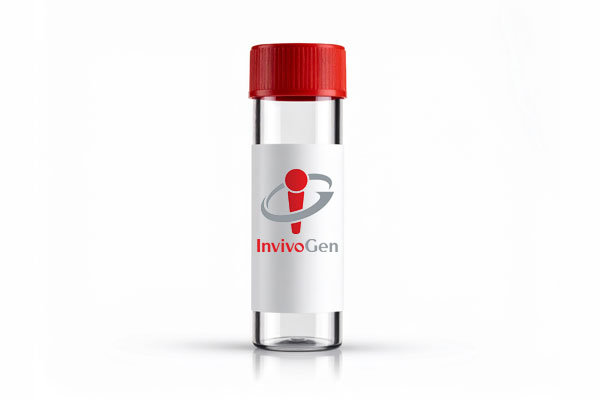Mycoplasma contamination of cultured cells is a massive problem in research labs and industrial facilities. In fact, depending on the setting, anywhere from 10% to 85% of cell lines might be contaminated[1].
ycoplasma infection can drastically alter the functions and activities of eukaryotic cells, leading to experimental artifacts and consequently, to unreliable results.
Only mycoplasma-free cultures should be used in the laboratory, meaning that all cell lines, especially those coming from other labs, should be regularly tested for mycoplasma.
If any contamination is found, then the infected cells should immediately be discarded to prevent the infection from spreading. However, precious cell lines can be saved with mycoplasma-elimination treatments.
Anti-mycoplasma antibiotics
Unfortunately, mycoplasmas are immune to common cell-culture antibiotics such as penicillins and streptomycin. Thus, they must be eliminated using specific anti-mycoplasma antibiotics.
There are three classes of antibiotics that kill mycoplasma when used at relatively low concentrations: tetracyclines, macrolides and quinolones.
Tetracyclines and macrolides block protein synthesis by interfering with ribosome translation, whereas quinolones inhibit replication of mycoplasma DNA.
Commercially available anti-mycoplasma agents for cell culture
Many anti-mycoplasma antibiotics are currently on the market, such as CiproBay/ciprofloxacin. However, no single antibiotic can kill 100% of the mycoplasma in cell culture. Thus, for maximum efficacy, a formulation containing at least two antibiotics that differ by mechanism of action should be used.
Popular commercially available antibiotic formulations include BM-Cyclin (Roche), which contains a macrolide and a tetracycline, and MRA (ICN), which includes two quinolones.
However, Plasmocin® (InvivoGen) is the only anti-mycoplasma reagent that combines a macrolide and a quinolone.
Unlike BM-Cyclin, which requires the sequential and cyclic use of two antibiotics, Plasmocin® is a single ready-to-use product that can be added directly to the culture medium.
Furthermore, the two antibiotics in BM-Cyclin are both inhibitors of protein synthesis, whereas the two antibiotics in Plasmocin® have distinct mechanisms: one blocks protein synthesis and the other stops DNA replication.
Therefore, Plasmocin® is more effective at removing mycoplasma and prevents the generation of resistant strains.
Moreover, in contrast to other anti-mycoplasma compounds, Plasmocin® is active against free as well as intracellular forms of mycoplasma. This advantage is conferred by one of the components of Plasmocin®, which is actively transported into mammalian cells. It ensures that, following treatment, cell cultures do not become re-infected by mycoplasma that had previously been released from the intracellular compartments of infected cells.
To date, no consistent or permanent alterations that affect eukaryotic cells during or after Plasmocin® treatment have been reported. Plasmocin® is a highly referenced treatment whose efficiency has been thoroughly evaluated by numerous academic laboratories[2-5].
In very rare cases, mycoplasmas resistant to Plasmocin® have been reported. To eradicate these mycoplasmas (or contaminants), InvivoGen has developed a second anti-mycoplasma agent, called Plasmocure™. It combines two antibiotics that act through different mechanisms of action to those in Plasmocin®. A 2-week treatment with Plasmocure™ has been found to be sufficient to completely eliminate all mycoplasmas. Although this product can lead to moderate temporary toxicity during treatment, once the contamination has been eliminated, the cells fully recover.
Comparison of the most common anti-mycoplasma agents
| Product | Supplier | Treatment | Ease of use | Efficacy | Cytotoxicity | Resistance |
|---|---|---|---|---|---|---|
| BM-Cyclin | Roche | 3 weeks | - | ++ | + | +/- |
| Ciprobay | Bayer | 12 to 20 days | + | + | +/- | + |
| MRA | ICN | 1 to 2 weeks | + | + | +/- | + |
| Plasmocin™ | InvivoGen | 2 weeks | + | +++ | +/- | - |
| Plasmocure™ | InvivoGen | 2 weeks | + | ++++ | + | - - |
References:
1. Olarerin-George AO. and Hogenesch JB., 2015, Assessing the prevalence of mycoplasma contamination in cell culture via a survey of NCBI’s RNA-seq archive, Nucleic Acids Research, (5):2535-42
2. Uphoff CC, Drexler HG, 2005. Eradication of mycoplasma contaminations. Methods Mol Biol. 290:25-34.
3. Uphoff CC et al., 2012. Treatment of mycoplasma contamination in cell cultures with Plasmocin. J Biomed Biotechnol. 2012:26767;
4. Molla Kazemiha V et al, 2011 Efficiency of Plasmocin™ on various mammalian cell lines infected by mollicutes in comparison with commonly used antibiotics in cell culture: a local experience. Cytotechnology. Dec;63(6):609-20
5. Romorini L et al, 2013. Effect of antibiotics against Mycoplasma sp. on human embryonic stem cells undifferentiated status, pluripotency, cell viability and growth. Plos One. Jul 30;8(7):e70267




